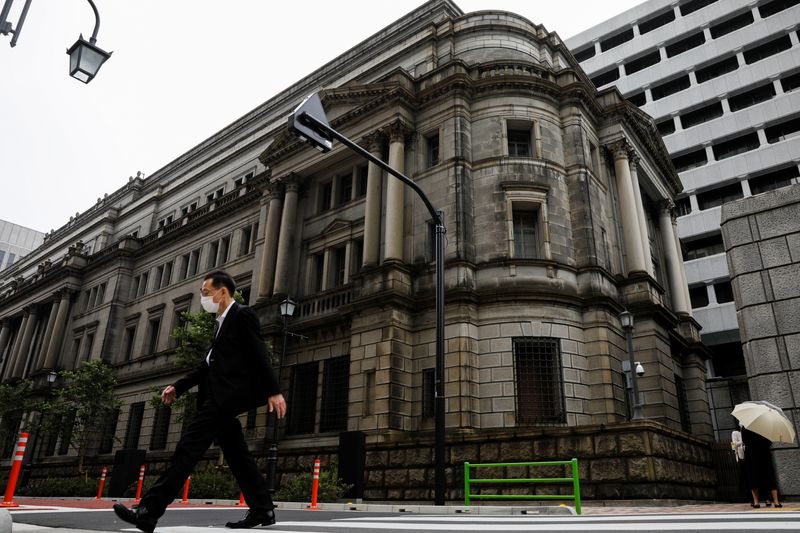By Leika Kihara
TOKYO (Reuters) - The Bank of Japan's yield curve control (YCC) is drawing attention from other central banks, including the U.S. Federal Reserve, as a possible policy tool to help economies recover from the devastation caused by coronavirus pandemic.
Fed officials, including New York Federal Reserve Bank President John Williams (NYSE:WMB), have recently said YCC could be a tool to complement forward guidance.
After cutting rates to historic lows, Australia's central bank set a target of around 0.25% for the three-year bond yield.
The BOJ pioneered YCC. This is how it has worked in Japan and its potential pitfalls.
WHY DID BOJ INTRODUCE YCC?
YCC is generally seen as a tool to keep borrowing costs low. But when it was adopted in 2016, the BOJ's main purpose was to avoid excessive rate declines.
After years of huge bond buying failed to fire up inflation and dried up market liquidity, the BOJ cut short-term rates below zero in January 2016 to fend off an unwelcome yen rise.
The move crushed yields across the curve, outraging financial institutions that saw returns on investment evaporate.
To pull long-term rates back above zero, the BOJ adopted YCC eight months later by adding a 0% target for 10-year bond yields to its -0.1% short-term rate target.
The idea was to control the shape of the yield curve so that short- to medium-term rates - which affect corporate borrowers - fall, without pushing down super-long yields too much and reducing returns for pension funds and life insurers.
HOW DOES IT WORK?
YCC is an efficient way to cap borrowing costs in a country like Japan, where the central bank already owns nearly half of the bond market.
Having already gobbled up so much bonds, it is hard for the BOJ to commit to buying more at a set pace. Under YCC, it only needs to buy as much as needed to achieve its 0% yield target.
When yields are stable around the target, the BOJ can taper purchases. At a time like now when the government is ramping up debt issuance to fund a huge stimulus package, the BOJ can accelerate purchases. By doing so, it can help keep government borrowing costs low and maximise the effect of fiscal spending.
WHAT ARE THE PITFALLS?
By committing to keep yields at a certain level, central banks lose control over how much bonds they buy.
The biggest challenge for the BOJ was to keep super-long bond yields from falling too much and narrow financial institutions' margins.
When yields rise, the BOJ can simply ramp up buying. When they fall, it could reduce purchases. But that creates communication challenges, as it runs counter to its pledge to keep monetary policy ultra-loose.
YCC also limits the BOJ's monetary easing options. Cutting the rate targets is not ruled out but seen as a highly unlikely option due to the pain it inflicts on commercial banks.
WOULD IT WORK IN OTHER COUNTRIES?
In Japan, YCC is seen as a tool directly aimed at capping bond yields. Fed officials look at it more as something that could complement forward guidance, or communication aimed at managing long-term interest rates.
The BOJ managed to pin yields around its target for nearly four years because of its dominance in Japan's $9 trillion bond market. It would be far more challenging for the Fed, which needs to wrestle with a vastly diverse $18 trillion U.S. Treasury market.

The BOJ had to target 10-year yields because that was the most liquid zone in Japan's bond market. Other central banks could instead target the shorter end of the curve, such as the three-year zone like that for Australia.